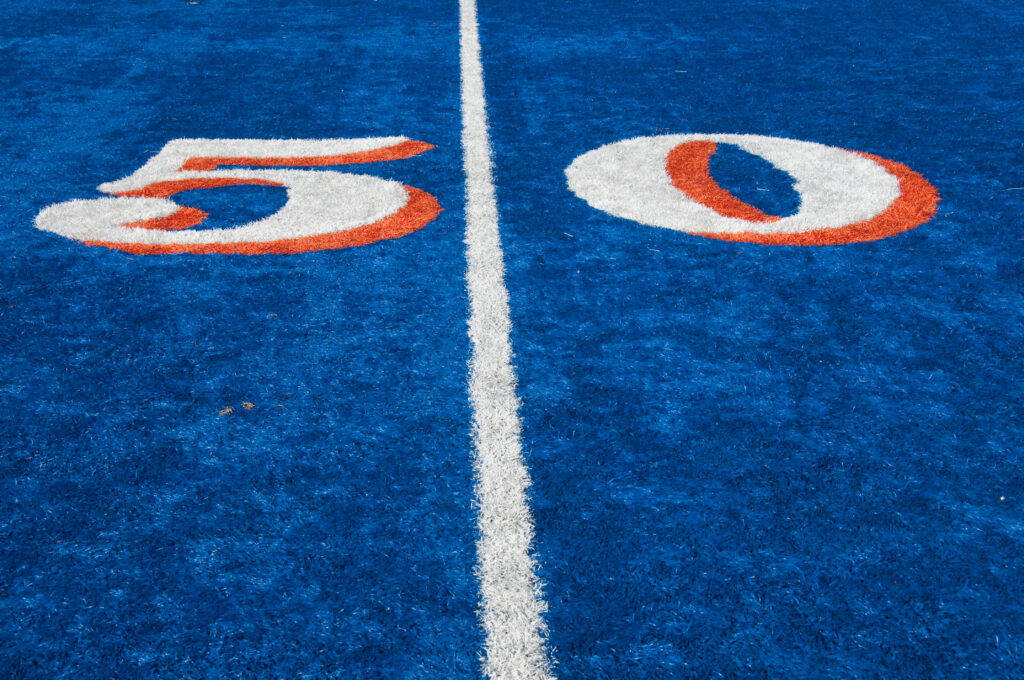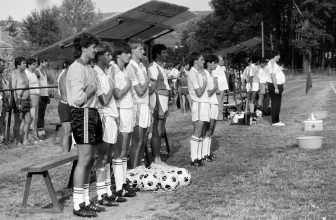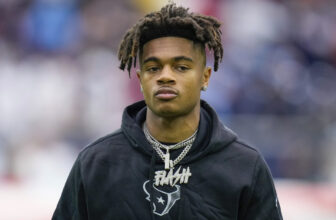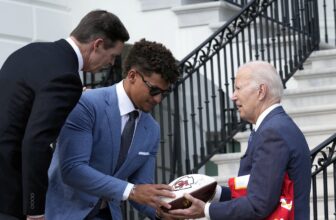
In 1986, Boise State University broke with football convention by installing bright blue turf on its football field. The school’s now-famous “smurf turf” received federal trademark protection in 2011.
Since Boise State registered its trademark blue turf, other colleges, universities, and even some US high schools have sought to change the colors of their own turf. Most of these schools have discussed their plans with Boise Stateーbut one school, SUNY Morrisville, is breaking with convention in a way that may trigger a trademark showdown.
Beyond Blue: Boise State’s Common-Law Claims
While Boise State’s official trademark applies only to “the color blue as applied to artificial turf,” the university has long claimed it has a common-law trademark right related to any college or university turf in colors other than the traditional green.
For instance, in a 2014 letter to officials at Eastern Michigan University, Boise State’s Director of Trademark Licensing and Enforcement wrote that in addition to the registered trademark for blue turf, “Boise State also owns long-standing common-law trademark rights in the trade dress arising from the use of any non-green playing field” in intercollegiate sports. The remark was included in a letter in which Boise State granted a license to Eastern Michigan University to turn the EMU turf gray.
Boise State University has indeed established a track record of granting licenses for non-blue turf fields. In addition to licensing Eastern Michigan University’s gray turf in 2014, Boise State also signed off on Coastal Carolina’s decision to turn its turf teal. In 2011, Boise State granted royalty-free licenses to Central Arkansas for a purple and gray field and to Eastern Washington for red turf. In 2009, the University of New Haven and Boise State agreed to a non-exclusive license for UNH’s blue and yellow turf field, which the parties later renewed through 2030.
Some of these agreements are more complex than others. The Coastal Carolina agreement, for instance, includes six pages of specifics related to Coastal Carolina’s license from Boise State. In that deal, the parties agreed that the teal turf wouldn’t exceed 75 percent of the field’s dimensionsーand that Coastal Carolina wouldn’t refer to its nearly-blue turf in its marketing.
Boise State acknowledges that its registered trademark only covers the color blue. While stating it has common law interests in other field colors, the university also acknowledges that not every color or color combination would automatically infringe on those rights. Now, SUNY Morrisville appears to be testing the line.
SUNY Morrisville Goes on Offense With Black Field
When it was first installed, Boise State’s blue field was the only non-green gridiron in the United States – and it remained so for over twenty years. When additional colors began taking the field, their respective schools generally sought Boise State’s permission, even when the chosen color wasn’t blue.
Now, however, SUNY Morrisville is running a different play. While schools like Eastern Michigan and Eastern Washington sought permission for non-blue turf, SUNY Morrisville has chosen to install its black turf without talking to Boise State first.
Officials at Boise State have not commented on whether they believe the SUNY Morrisville decision infringes on BSU’s common-law trademark rights. SUNY Morrisville’s decision to move ahead without consulting Boise State, however, represents a break in longstanding tradition.
Common Law Trademark Rights
Registering a trademark with the United States Patent and Trademark Office (USPTO) secures the right to use a mark within the US. It also secures rights and powers to keep others from using that mark.
Yet, not all trademark rights hinge on registration. US law recognizes that “common law” rights to a trademark exist when a trademark is established through use. Even when a trademark hasn’t been registered, its user may be able to demonstrate they have rights in the markーand prevent others from infringing upon that mark. These disputes are decided on a case-by-case basis.
In the case of Boise State, the school’s longstanding status as the only school with non-green turf lends support to an argument that “non-green turf,” rather than just blue turf, is a trademark of Boise State’s football program. The fact that many other schools have asked Boise State for a license for turf that is neither green nor blue may also lend support to this argument.
To date, there is no indication a case will be filed between Boise State and SUNY Morrisville. The latter school’s decision not to reach out to Boise State about its new black turf, however, raises questions about the extent of common-law trademark claims.
Federal trademark registration is available for a range of distinctive marks, including not only traditional logos or brand names but also colors, sounds, and even smells. For assistance filing your trademark application or responding to a USPTO denial, talk to an experienced Los Angeles trademark attorney today.





